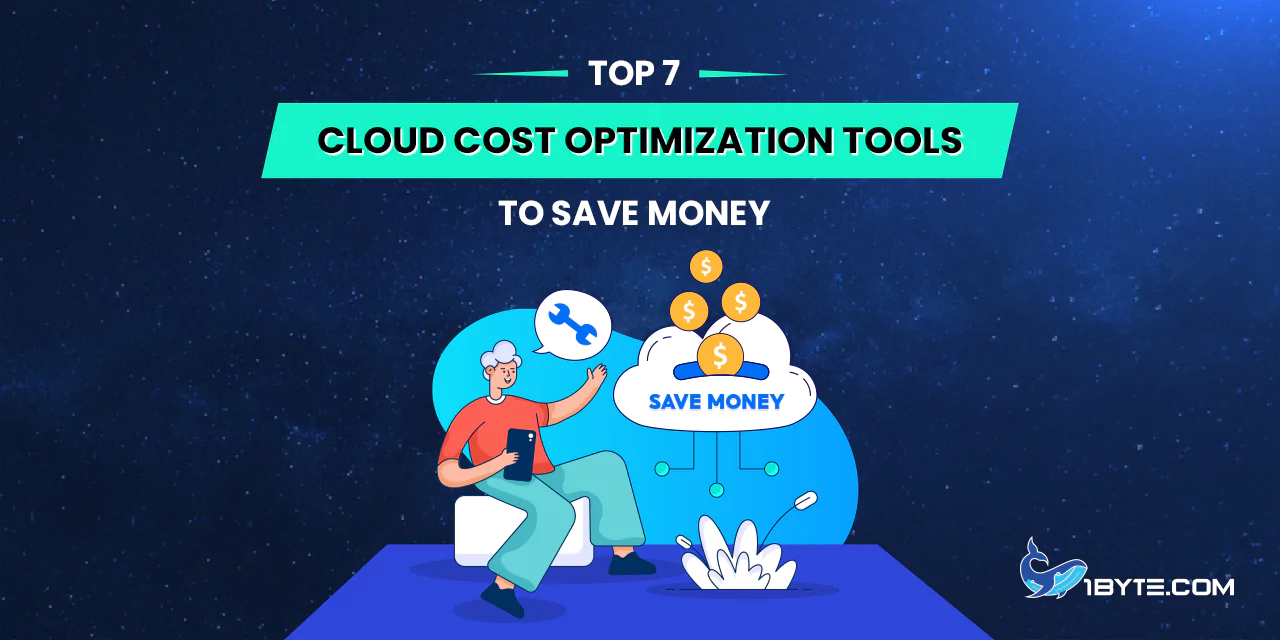- 1. CloudZero – Cost Intelligence Across Multi-Cloud Environments
- 2. Apptio Cloudability – Comprehensive FinOps Platform for Cost Management
- 3. VMware CloudHealth – Multi-Cloud Cost Management and Accountability
- 4. Flexera Cloud Cost Optimization – Enterprise Multi-Cloud Cost Control
- 5. Spot by NetApp – Automated Cloud Infrastructure Optimization
- 6. Finout – Unified Multi-Cloud Cost Management with Granular Insights
- 7. Kubecost – Kubernetes Cost Optimization for Multi-Cloud Clusters
- Conclusion
Companies are investing heavily in cloud computing, yet much of the expenditure usually goes to waste. Actually, the average cloud waste amounted to approximately 30 32 percent of cloud spending by companies over the past years. The stakes are high since public cloud spending alone is expected to skyrocket to $723 billion in 2025 (up 21.5 percent compared to 2024). These costs are not easy to control – 84 percent of organizations cite cloud spend management as their greatest cloud challenge. As a result, many companies are embracing FinOps (cloud financial management) and turning to specialized cloud cost optimization tools to regain control of their budgets. It is particularly relevant in multi-cloud, where approximately 80 percent of companies have more than one public cloud and require a single mechanism to control spend across platforms.
Cloud cost optimization tools help identify unused resources, right-size workloads, and automate savings across AWS, Azure, Google Cloud and more. They support the decisions with data and recommendations. Below are seven of the top cloud cost optimization tools – including multi-cloud solutions – that organizations can use to save money on their cloud bills. Here at 1Byte we will examine the main features of each tool, how it can be used to reduce waste, and any interesting outcomes or applications.
1. CloudZero – Cost Intelligence Across Multi-Cloud Environments
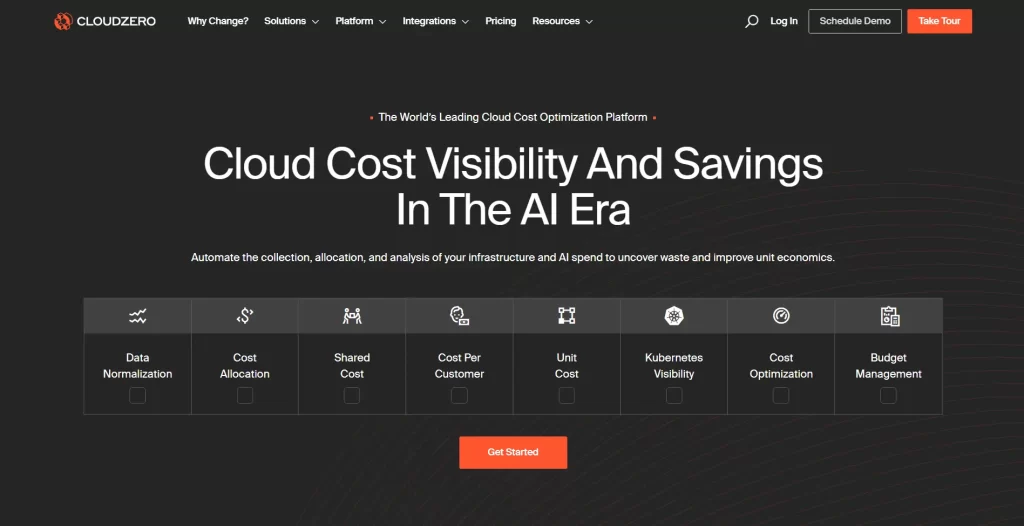
CloudZero is a modern cloud cost intelligence tool that focuses on delivering detailed visibility and insights. Unlike basic cost trackers, CloudZero aggregates AWS, Azure, Google Cloud, Kubernetes, and even third-party services like Snowflake or Datadog spending into one image. It then decomposes cloud expenditure in business terms e.g. cost per customer, per product feature, per team, or environment, without needing to do a lot of tagging. This fine-grained allocation assists engineering and finance teams to know the precise location of money flow.
CloudZero operates on a real time basis to avoid overspending. It provides cost monitoring on an hourly basis and anomaly detection, which enables teams to recognize cost spikes or inefficiencies and take action in a timely fashion. It also points out the application features or services that use the most resources, so it is easier to figure out what can be optimized or even switched off. By doing so, customers of CloudZero have been able to save significant amounts of money on cloud costs, e.g. Drift saved 4 million dollars on AWS and Ninjacat cut cloud expenses by 40 percent after utilizing CloudZero. These results show that the bottom line can be directly affected by aligning cloud usage to business metrics.
2. Apptio Cloudability – Comprehensive FinOps Platform for Cost Management
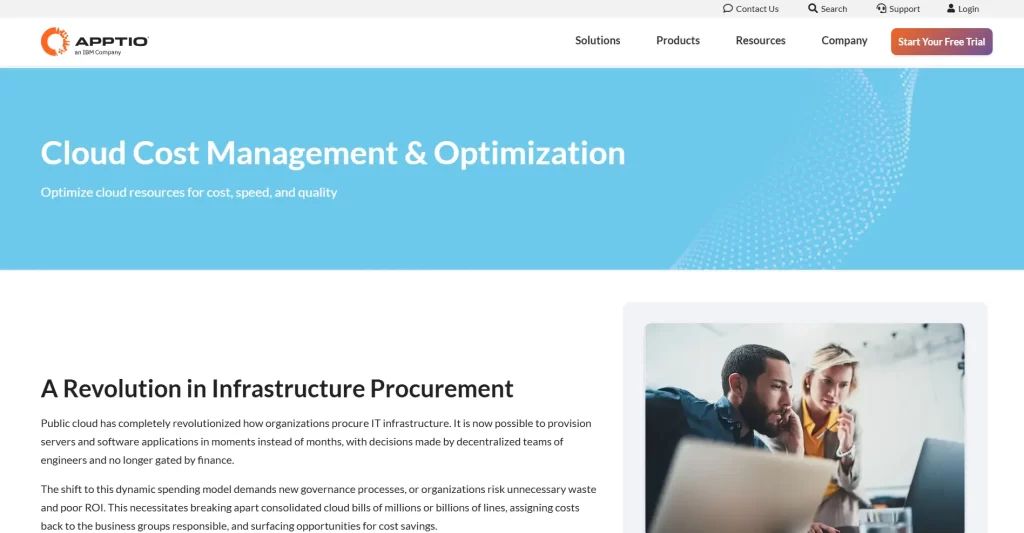
Apptio Cloudability is one of the most established cloud cost optimization tools in the industry, widely used by enterprises to implement FinOps best practices. It offers a full set of capabilities to track and optimize cloud spend on AWS, Azure, and Google Cloud. The core capabilities are in budgeting, forecasting and rightsizing recommendations to make sure that resources are utilized effectively. Cloudability assists teams to establish spending limits and receive alerts when costs go beyond the anticipated levels. It also examines usage to recommend rightsizing (e.g. downsizing an oversized VM) and points out under-utilized resources which can be discarded.
Moreover, Cloudability will be able to plan and optimize the purchase of Reserved Instances or savings plans to reduce costs. It also monitors container and Kubernetes expenses and it can integrate with container orchestration systems to assign costs to microservices. The platform even imports data on common monitoring and incident tools such as Datadog and PagerDuty to augment its cost analysis. Cloudability can identify savings opportunities that would not be identified otherwise by integrating financial and operational information. Cloudability is used by many organizations to create reports to various teams (showback/chargeback) so that each department or product owner is responsible to the cloud costs they incur. This transparency and responsibility has rendered Cloudability a de facto solution to cloud financial management in large multi-cloud enterprises.
3. VMware CloudHealth – Multi-Cloud Cost Management and Accountability
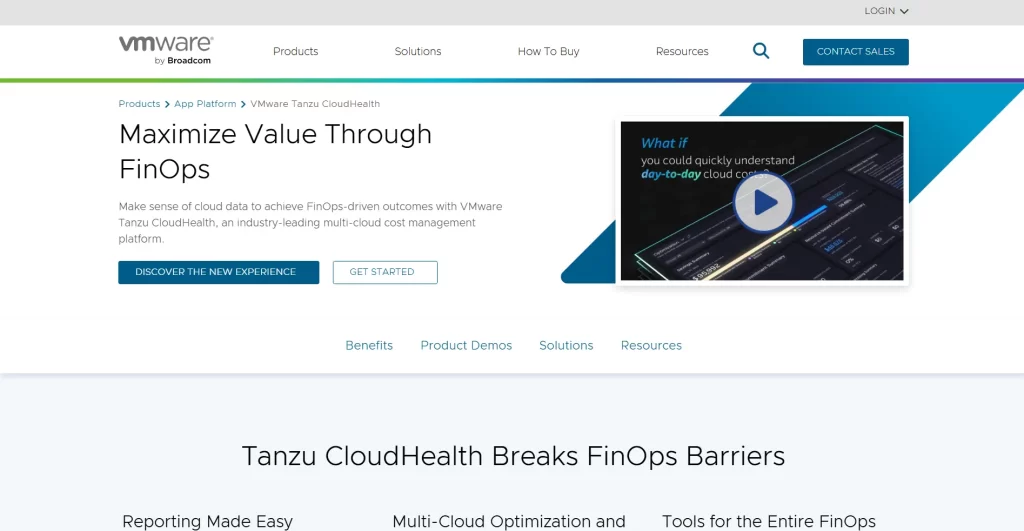
VMware CloudHealth (a component of VMware Tanzu) is an effective multi-cloud cost management platform. It works with AWS, Azure, Google Cloud and others to provide companies with a single picture of their spending across all their cloud accounts. CloudHealth is cost-accountable with features like showback and chargeback reports which enable assigning cloud costs to a specific team or project. This assists in determining which business units or applications are increasing the cost of the cloud bill and promotes more responsible use.
CloudHealth monitors the expenditure and usage of resources in real-time. It is able to monitor the cost over the period and even predict future costs on cloud spending using past data. This enables organizations to foresee budget overruns before it occurs. The platform will automatically detect wasted spend and underutilized resources and recommend rightsizing or deleting idle instances. It also makes suggestions of optimizations across services (such as resizing VMs or moving to lower cost storage tiers). Companies can use CloudHealth to enforce policies to manage their cloud usage e.g. automatically shutting instances outside of hours or enforcing tag-based cost allocation. In general, VMware CloudHealth is a mature product, which integrates cost transparency and governance, enabling enterprises to save money and operate multiple clouds at scale.
4. Flexera Cloud Cost Optimization – Enterprise Multi-Cloud Cost Control
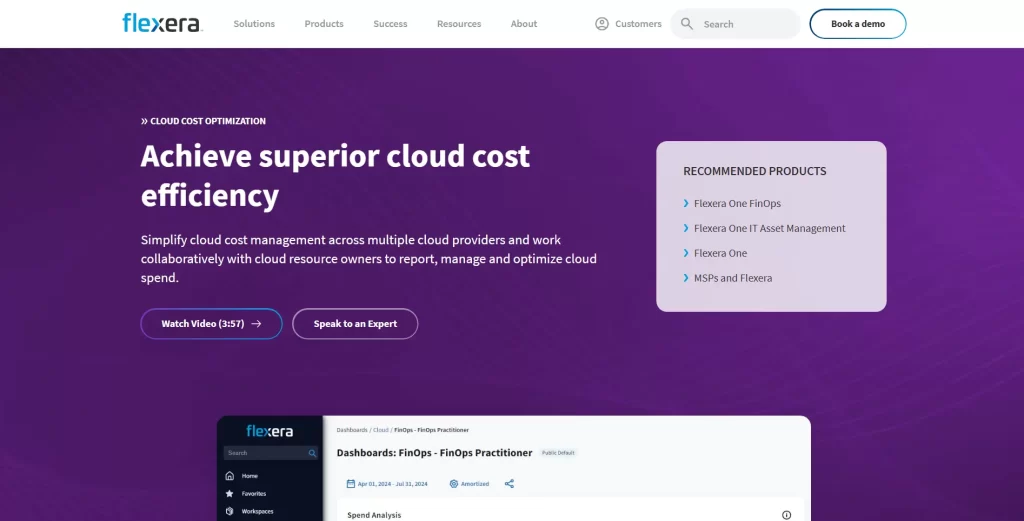
The Cloud Cost Management tool offered by Flexera (previously RightScale Optima) is designed to suit large organizations with complex hybrid and multi-cloud environments. It provides all the typical cost management capabilities including detailed cost analysis, spend reporting and forecasting in an enterprise friendly package. The difference between Flexera and other companies is that it is concentrated on organizational controls and allocations. The platform allows companies to assign cloud expenses to teams, projects, or cost centers, providing a microscopic view of which teams are spending the budget. This visibility is essential in business environments where several departments share cloud resources.
Flexera offers automated budget alerts to remind the stakeholders that they are about to (or have) reached a specified limit. This makes sure that there are no surprises at the end of the month. The tool is also able to aggregate data of the private clouds or on-premises virtualized environments with the costs of the public clouds. That end-to-end perspective can assist enterprises to compare prices and optimize workload location (i.e. whether a workload is less expensive on-prem or on AWS). The solution provided by Flexera frequently becomes a part of the general IT asset management and governance systems of the company. Flexera has been reported to give businesses more control over their cloud spend and reduce waste because teams are held accountable and idle resources are more actively purged. It is a powerful option to companies that require governance and cost optimization of various cloud platforms.
5. Spot by NetApp – Automated Cloud Infrastructure Optimization
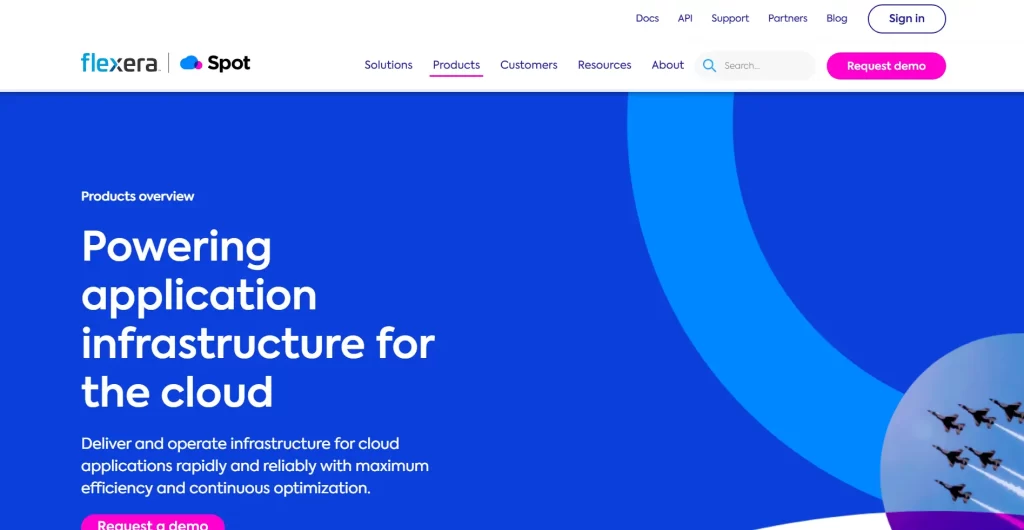
Spot by NetApp is a cost optimization platform in the cloud with features of automation that directly saves the costs of infrastructure. Spot is a machine learning and intelligent automation tool that helps to manage cloud resources in the most cost-effective manner. It is also noteworthy that it dynamically allocates compute instances based on the least expensive available instances (such as spot instances) and manages the purchase of reserved instances, all based on the requirements of the application. Spot removes overprovisioning and reduces cloud waste by substituting on-demand instances with spot instances (up to 80 percent less expensive) when possible. These optimizations are compatible with large clouds such as AWS, Azure, and Google Cloud.
The Spot platform has a number of elements that are savings oriented. As an example, its Eco module automatically buys and controls reserved capacity on AWS and Azure in order to maximize discounts. It also offers a chargeback cloud billing engine, and detailed cost reporting to allow the stakeholders to view the effects of the optimizations. The effectiveness of Spot is reflected in practice: in practice, users can often reduce their cloud bills by using Spot automation immediately. One finance leader said the effect on their bottom line was instantaneous and Spot kept saving more and more over time. Companies can always use the most cost-efficient infrastructure, without compromising on performance, by offloading the complexity of continuously tuning resources to the Spot algorithms. This renders Spot by NetApp as a top option when automating cloud cost optimization, particularly in large-scale settings.
6. Finout – Unified Multi-Cloud Cost Management with Granular Insights
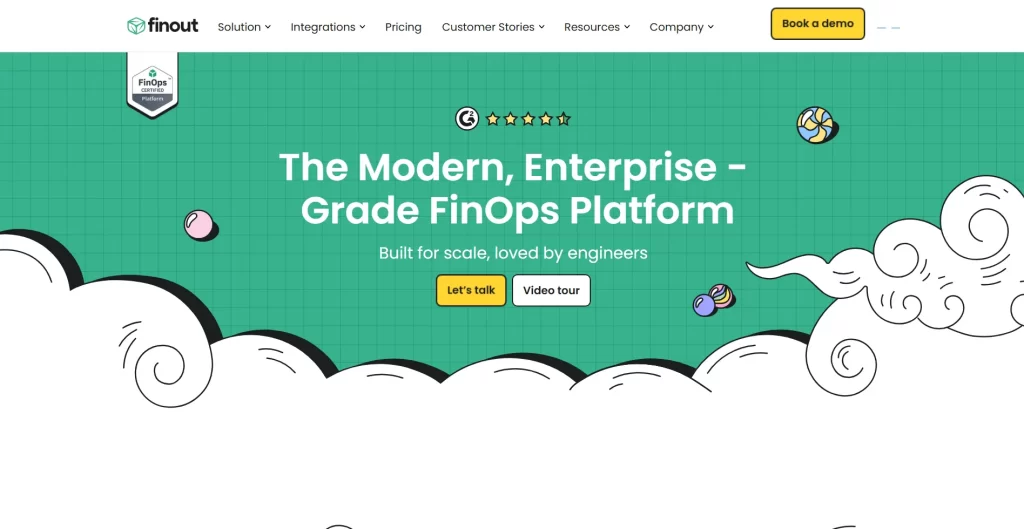
Finout is a recent addition to the FinOps space, providing a single pane of glass into cloud spend across many providers and services. It is meant to extend beyond what is offered by native tools of cloud vendors. Finout collects billing information across AWS, Azure, GCP, Kubernetes, Snowflake, Databricks and other clouds into one dashboard. This provides organizations with a real single pane of glass over all their cloud spend which is quite useful when you have complex, multi-cloud architectures.
Finout is one of the strengths of the company as it is granular and customizable in cost analytics. Teams are able to decompose and visualize cloud costs in a manner that is meaningful to the business. As an example, Finout enables cost reporting at the cost center, team, environment, or even Kubernetes namespace level. It also allows you to set your own metrics, you may count cost per transaction or per customer, whatever suits you. The dashboards of the platform are very configurable, and therefore, the finance and engineering can drill down into the details that are important to them. Finout also has real-time notifications of spending anomalies or over-budget breaches, which can help avoid runaway costs. Essentially, it introduces the flexibility of a BI tool to cloud cost management. By exploring further into the costs based on usage and unit economics, businesses can find inefficiencies that would have been difficult to find in the aggregate cloud bills. Finout also supports multi-cloud so nothing falls through the cracks and is a great tool to optimize spend and prevent the typical bill shock that can occur in high growth cloud deployments.
7. Kubecost – Kubernetes Cost Optimization for Multi-Cloud Clusters
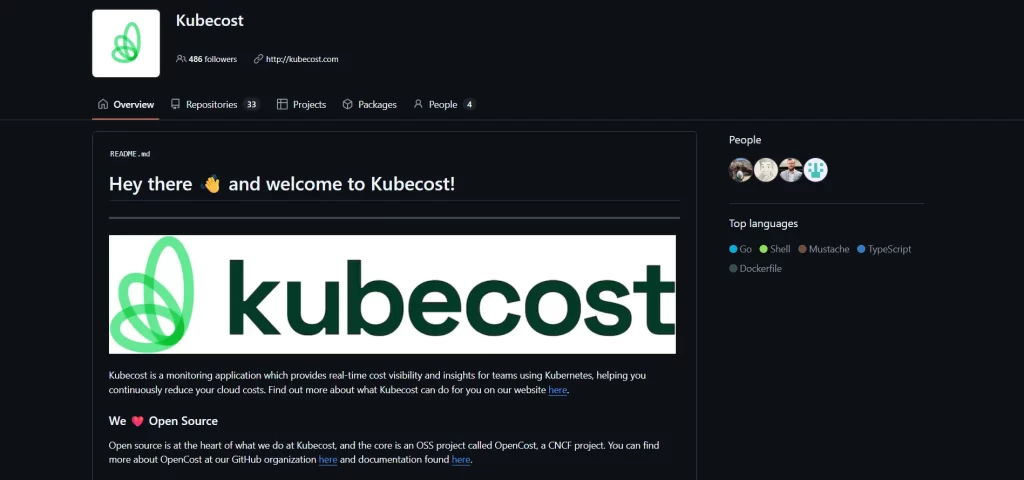
With the increasing use of Kubernetes, Kubecost has become a common tool to assist teams to control the cost of containerized workloads. Kubecost is an open source tool that gives real time, continuous visibility into the cost of running Kubernetes clusters. When dozens of microservices share a cluster, cloud bills can become opaque, which Kubecost addresses by breaking down costs along Kubernetes concepts such as namespace, deployment, service, node and pod. It basically traces your cloud provider billing to the Kubernetes resources that were billed. This detailed attribution allows the engineers to view, e.g., how a specific microservice or team is spending in the cluster.
Kubecost may be used in several clusters and cloud providers, providing a consistent picture in hybrid or multi-cloud Kubernetes environments. In addition, it integrates Kubernetes cost data with other infrastructure costs – thus you can combine it with non-K8s cloud costs to have a complete view of your environment spend. In addition to monitoring, Kubecost also proposes cost optimization opportunities to clusters. It could suggest rightsizing a deployment (downsizing CPU/RAM requests to reflect actual usage), scheduling workloads to avoid idle resources, or deleting Kubernetes objects that are no longer used and are bound to expensive cloud resources. These lessons are revised on a regular basis, which enables teams to adapt on the fly. With Kubecost, Kubernetes organizations have been able to eliminate large amounts of waste, particularly through fixing over-provisioned resources and making better use of nodes. Since containerized applications have become a significant component of the contemporary cloud infrastructure, a tool such as Kubecost is essential to make sure the efficiency and agility of Kubernetes do not come at the cost of an excessive cloud bill.
Leverage 1Byte’s strong cloud computing expertise to boost your business in a big way
1Byte provides complete domain registration services that include dedicated support staff, educated customer care, reasonable costs, as well as a domain price search tool.
Elevate your online security with 1Byte's SSL Service. Unparalleled protection, seamless integration, and peace of mind for your digital journey.
No matter the cloud server package you pick, you can rely on 1Byte for dependability, privacy, security, and a stress-free experience that is essential for successful businesses.
Choosing us as your shared hosting provider allows you to get excellent value for your money while enjoying the same level of quality and functionality as more expensive options.
Through highly flexible programs, 1Byte's cutting-edge cloud hosting gives great solutions to small and medium-sized businesses faster, more securely, and at reduced costs.
Stay ahead of the competition with 1Byte's innovative WordPress hosting services. Our feature-rich plans and unmatched reliability ensure your website stands out and delivers an unforgettable user experience.
As an official AWS Partner, one of our primary responsibilities is to assist businesses in modernizing their operations and make the most of their journeys to the cloud with AWS.
Conclusion
Choosing the right cloud cost optimization tools can yield substantial financial savings. Each of the tools above tackles cloud overspending from a slightly different angle – whether through detailed visibility (CloudZero, Finout), policy and accountability (CloudHealth, Cloudability, Flexera), automation (Spot), or specialized workload focus (Kubecost). They can often be used in combination as well. What’s clear is that cloud cost optimization has become a top priority for businesses of all sizes. In fact, 87% of companies now say cost efficiency and savings are the number one metrics for measuring cloud success. This focus reflects the need to squeeze maximum value from every cloud dollar. By leveraging these tools and the FinOps practices that go with them, organizations can eliminate waste (often on the order of 30% of cloud spend) and keep their cloud budgets under control, all while continuing to innovate. In an era of growing cloud usage and rising costs, investing in cloud cost optimization is not just about saving money – it’s about sustaining business agility and competitiveness in the cloud.

